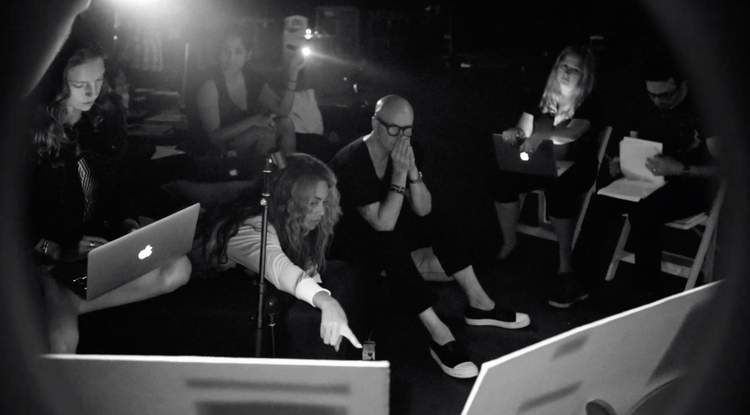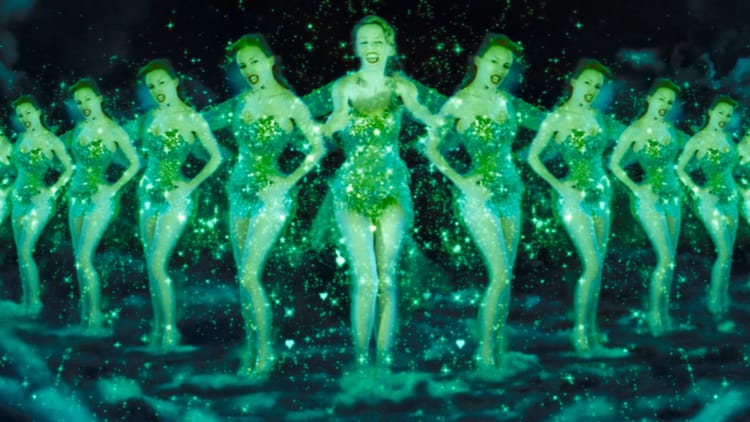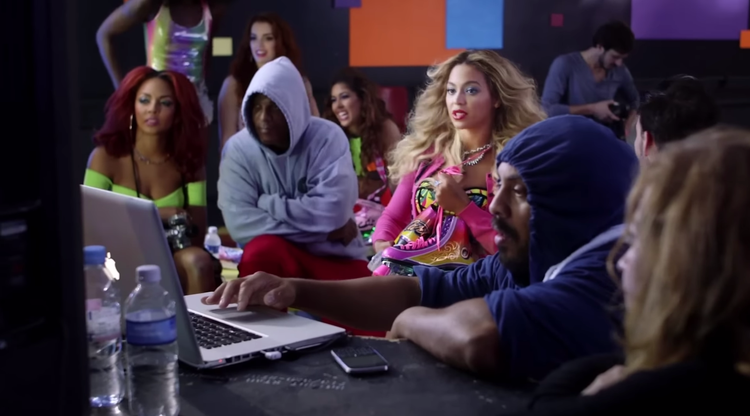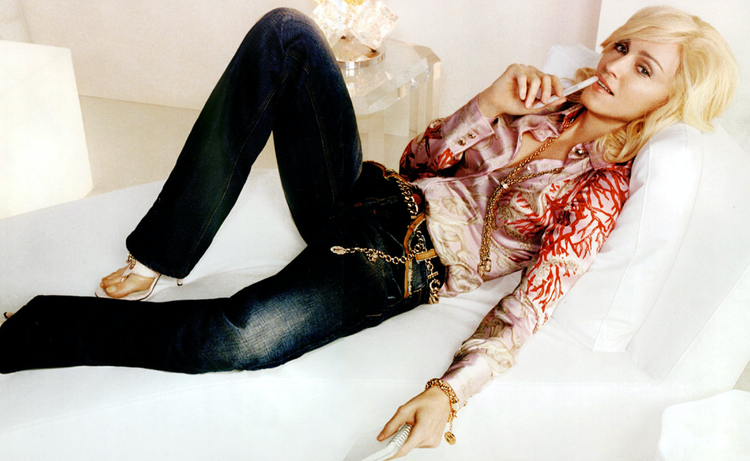What Happened Between Madonna and David Fincher?
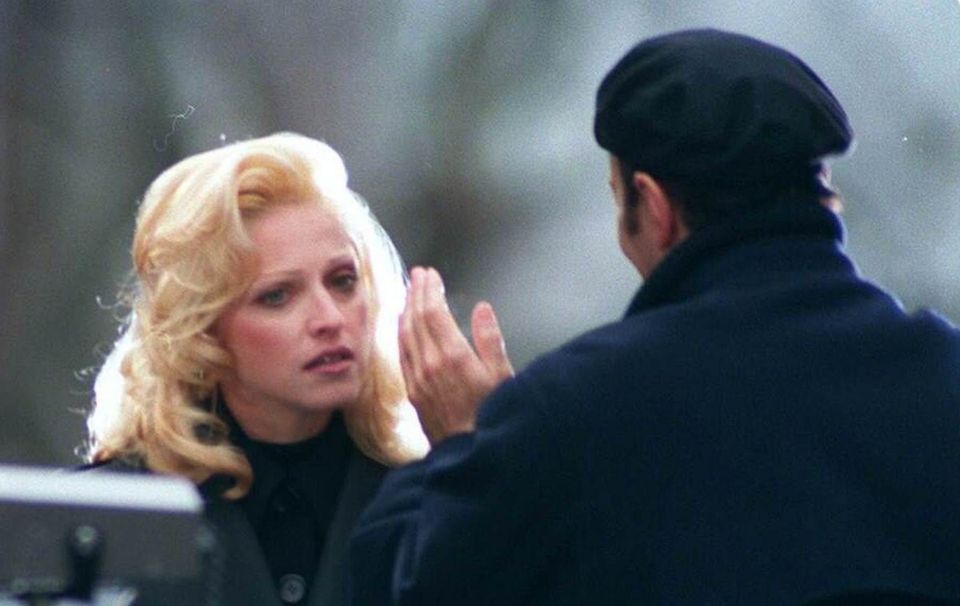
1/17/21: Since publishing this essay, I’ve been made aware of several new (and very relevant) details, quotes, and clips—largely by readers, from whom I’m still getting the occasional email or comment three months later. (In more than one case, they’d translated something from another language into English for me because they thought it might be of interest.) I’ve inserted several of these tidbits into the text below, which you’ll see in bold and with credit to whichever reader brought it to my attention.
In February of 1993, Madonna was in Paris for a day of televised interviews, most notably the special “Madonna, c’est Madonna.” Decked out in Old Hollywood glam, she spent 90 minutes answering questions about the first decade of her career for host Christophe Dechavanne. Towards the end of the program, Agnès Varda drops in to reminisce about how Madonna had at one point optioned the rights to remake Cléo de 5 à 7 (1962) in the United States, looking to produce and star in it. Varda appears to have been on board with the project, but issues nevertheless surfaced while in development. (In 2018, Varda suggested that Cléo’s story hit too close to home for Madonna, whose mother had died of cancer when she was a child.) Despite the remake not panning out, the two women still clearly have a great deal of respect for each other in 1993—Madonna blushes as Varda calls her “a genius at adaptation”—and they were photographed together as recently as 2015. (When Varda died last year, Madonna posted a tribute to her on social media.)
The thought of a Cléo remake starring Madonna has haunted me since I first saw this interview, and yet it’s somehow less haunting than another interview that she gave the same day, for Le Journal du cinéma (as identified by Ma in the comments). Here’s a snippet of it, in which Madonna, a noted Marlene Dietrich enthusiast, is asked by Isabelle Giordano (as identified by Alice in the comments) whether she’s looking for her Josef von Sternberg. (Dietrich and the Austrian-born director made seven films together in five years, and are assumed to have had a more-than-professional relationship. As James Hancock has written, “interviews with friends, coworkers and family members suggest an intense private relationship between the two of them that was physical even when Dietrich was involved with other men. Dietrich’s daughter maintains that Josef von Sternberg was deeply in love with Marlene for his entire life.”) For context, Madonna had very recently starred in Body of Evidence (1993), an ill-received erotic thriller co-starring Willem Dafoe and Julianne Moore, and it was among the projects that she was in Europe to promote.
“Are you looking for your Josef von Sternberg?” Giordano asks.
“Um, yeah. I am,” Madonna responds, laughing.
“And what does—”
“I sort of have… I sort of feel like I have one, but he directs all my videos,” Madonna says, interrupting her. “His name is David Fincher, and we work on everything together, and we probably will do a movie someday. But I feel like the relationship I have with him is the one that she had with him, that Marlene had with von Sternberg.”
“What does it take to direct you?”
“It’s just almost like a silent language. It’s with eyes, you know, when you know someone so well. And it also has to do with love. I think the director kind of has to be in love with the actress, and only want the best for her.”
“His name is David Fincher” is telling of what that name meant in 1993 compared to now. Fincher had only made one narrative feature at that point, Alien 3 (1992), which underperformed at the box office and was considered a disaster before he came aboard the project. (Technically, his first-ever feature was the Rick Springfield concert film The Beat of the Live Drum [1985].) Fincher’s name would’ve meant a lot more to anyone who paid close attention to MTV. In February of 1993, he’d made almost 60 music videos in slightly less than a decade—most notably for Madonna, Paula Abdul, George Michael, and Aerosmith. (He’d go on to add Michael Jackson, Nine Inch Nails, the Rolling Stones, and Justin Timberlake [feat. Jay-Z] to that list. He’d also obviously make the things that he’s best known for having made.)
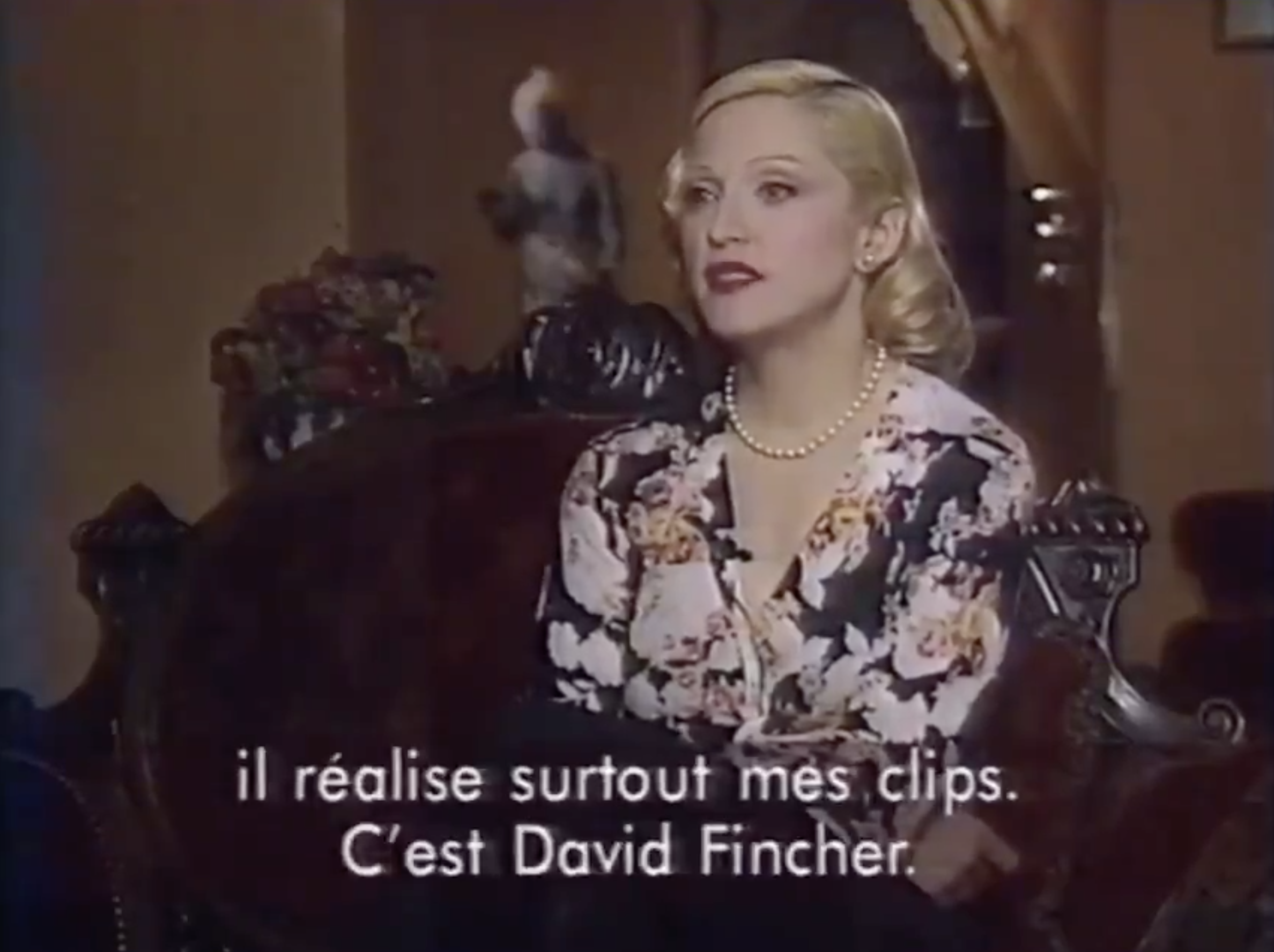
What set Madonna apart from Fincher’s other music industry clients was that the two were at one point “romantically involved,” a detail that appears to have been first revealed in a 1991 Vanity Fair cover story about Madonna by Lynn Hirschberg. It’s unclear when exactly the romantic part of their relationship began—sometime in 1989, as I’ll explain—but it ended just before Madonna embarked on her Blond Ambition World Tour in April of 1990. (At least, that’s when it officially ended; more on this later.) For some reason—perhaps because Fincher was even less of a household name in 1991, or perhaps because Madonna had multiple higher-profile relationships around this time—the fact that Madonna and Fincher had some sort of fling isn’t common pop culture knowledge the way one might expect it to be.
I, for my part, stumbled across the Vanity Fair profile by chance about a year ago, and was fully winded by it. It’s unclear whether Hirschberg was the first journalist with whom Madonna shared the information, or merely the first to retroactively deem it newsworthy. (The cover story was written more than a year after the relationship proper had ended, as it was mostly concerned with the documentary Madonna: Truth or Dare [1991].) When I filled my fiancé in on all of this, adding that it made sense because Madonna and Fincher made four videos together in total, he had the gall to grin at me and respond, “Well, it sounds like they probably made more than that.” I’m dedicating this newsletter in part to him, since that comment has inspired me as much as it’s stressed me out, and also my brilliant friend Dan, who’s been very patient and encouraging while I’ve pivoted away from tweeting obscenities about the pair to instead put my thoughts down here.
What struck me about the anecdote was the “hidden in plain sight”-ness of it all. The relationship was and remains off-the-record enough that Fincher doesn’t tend to appear in the listicles chronicling Madonna’s impressive love life as a public figure. They were never photographed together in any non-professional setting. Fincher won VMAs for their collaborations in both 1989 and 1990, but didn’t mention Madonna in either acceptance speech. And yet, the videos they made together were some of Madonna’s most personal and sexually provocative. Interviews and behind-the-scenes stories from the Like a Prayer (1989) and Erotica (1992) eras are full of signs that the two were engaged in extracurricular activities. There’s lots out there already about the videos themselves, so my main goal with the rest of this is to revisit them specifically for what we can learn about those extracurricular activities. As Raza Syed wrote for Vice in an overview of their collaborations, “Two notoriously exacting talents—the ingénue, the wunderkind—seized on each other’s velocity at precisely the right moment.” (Schwing.)

I: “I’M GLAD THAT I GAVE IN TO HIM”
Madonna and Fincher’s first collaboration was “Express Yourself,” filmed in April of 1989 and released the next month. The 30-year-old Madonna had filed for divorce from Sean Penn in January and kicked off her Like a Prayer era with the controversial “Like a Prayer” video in March. Perhaps in an effort to avoid a sophomore slump with her next one, she reached out to the 26-year-old Fincher—through the production company that he’d co-founded, Propaganda Films—wanting to do something inspired by Fritz Lang’s Metropolis (1927). The resulting video, which was the most expensive one ever made at that point, involves Madonna at different points chained to her bed, dancing in a gender-bending pantsuit, and—in its most recreated moment—crawling across the floor like a cat to lap up milk out of a bowl. (That’s why Britney Spears does something similar in “Slumber Party” [2016], and why Christina Aguilera pours a bowl of black goo all over herself in “Not Myself Tonight” [2010].)
So, because there’s indeed more to say about the milk, Madonna revealed not too long after the video’s release that said sequence had been Fincher’s idea. In the middle of an interview in which she’s seriously and assertively recapping her creative control over “Express Yourself,” she suddenly cracks a smile and begins stumbling over her words:
Um, David h—David’s idea for the cat to like… lick the milk and then pour it over. It’s great and believe me, I mean, I have to um… I fought him on that, I didn’t want to do it. I thought, ‘Oh, it’s just so over the top and silly and kind of cliché like art student or film student kind of trick, you know.’ I’m glad that I gave in to him.
I can’t stress enough that this is where our story begins. It seems to have been at some point between here and the fall of 1989 that Madonna and Fincher started hanging out outside of work hours. (It will have registered for some fans by now that Madonna also began a relationship with Warren Beatty sometime that same year. Let’s assume for simplicity’s sake—and also to give everyone the benefit of the doubt, fidelity-wise—that both relationships were happening on and off throughout the year, and that neither was exclusive. The facts suggest that Madonna and Beatty only went public and exclusive once Madonna and Fincher’s relationship proper fizzled out in 1990.)
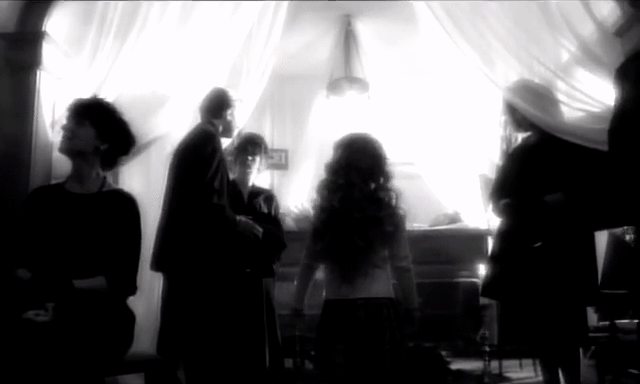
II: “I WENT TO BAT FOR YOU”
That summer, Madonna released “Cherish” as the third single from the album, making its video with photographer Herb Ritts. (It’s basically “Drunk in Love” [2013], but with mermen instead of Jay-Z.) The song became her 17th consecutive top-ten single, at which point it was time to start thinking about a potential 18th. There were multiple tracks to choose from—the danceable “Keep It Together,” the dark but catchy “Till Death Do Us Part,” the Prince-featuring “Love Song,” the whimsical “Dear Jessie.” In the end, Madonna went with “Oh Father,” a gloomy baroque-pop ballad about her daddy issues. It shouldn’t be controversial for me to say that it had little to no commercial appeal, especially compared to the others I’ve listed. In the end, there was no 18th consecutive top-ten single. So, what had happened?
“I had kinda talked Madonna into releasing ‘Oh Father’ as a single,” Fincher told The Guardian in 2009. Presumably, he’d listened to all of Like a Prayer and been drawn to the song, but there was no reason to make a video for it unless it was released as a single. The video that he ended up making was loosely autobiographical, connecting Madonna’s fraught relationship with her father to the loss of her mother, Madonna Sr. Shot in October and released in November of 1989, it begins with a reference to Orson Welles’s Citizen Kane (1941), a film that Fincher has obviously returned to for Mank (2020). An adult Madonna performs the song while her childhood self buries and mourns her mother, navigating her grieving and short-tempered father all the while. When real-life Madonna Sr. died in 1963, then five-year-old Madonna noticed at the funeral that her mother’s mouth “looked funny,” learning that her lips had been sewn shut. Fincher directly recreated this memory in his video, obviously in collaboration with his client. The only party not on board was MTV, which reportedly found the shot disturbing and asked that it be removed. Madonna declined, and the network wouldn’t have been in a position to piss her off any further.
Madonna was an astute businesswoman, so the fact that she agreed to release “Oh Father” as a single on Fincher’s recommendation speaks to a level of trust between the two. “We were very happy with the video,” Fincher said. “But nobody ever saw it because the song wasn’t a hit.” It’s reasonable to conclude that their entanglement had begun by this point, since Fincher was now not only being made privy to Madonna’s childhood traumas—there are no references to Madonna’s mother in the song’s lyrics—but actually influencing her business moves. “You screwed me up,” she’d tell him in the new year. “You wanted to make this video for the song and no one liked the song and I went to bat for you and now I have to make a video by Tuesday.” As Fincher has explained, “And I said, ‘What’s the song called?’ And she said, ‘Vogue.’”
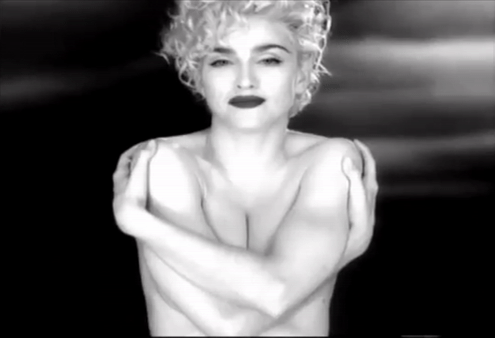
III: “DIETRICH AND DiMAGGIO”
“Vogue” was a song not from Like a Prayer but from I’m Breathless (1990), a companion album that Madonna made for Warren Beatty’s Dick Tracy (1990), which she was starring in. Fincher was given 48 hours to put the video together, filming it over a weekend in February. While it’s full of references to Art Deco and circa-1940s fashion photography, it’s perhaps most indebted to Isaac Julien’s Looking for Langston (1989), a hallmark of New Queer Cinema. (It also, quite notably, recreates photos of a number of Old Hollywood stars, including Dietrich as she appears in von Sternberg’s Shanghai Express [1932].) As with “Oh Father,” MTV objected to one shot—this time the early hero shot of Madonna, in which she dons a sheer top and you can very much see her nipples. As with the last one, however, it stayed put in the end.
“Vogue” was filmed during what seem to have been the final weeks of Madonna and Fincher’s romantic relationship proper, but that was perhaps unbeknownst to either party. As with “Express Yourself,” Madonna is styled, lit, and shot to be not only looked at but lusted after. (Fincher knew her best angles, after all.) Nipples aside, we’re talking silks, furs, diamonds, corsetry, a cone bra, more nudity, and even another pantsuit. Equally compelling is B-roll footage from the video shoot that’s since made its way online. Madonna is at times suggestive, silly, and perhaps a little distracted. It’s audio-less, but you can see that she at one point flirtatiously apologizes for screwing up a take. It all reads quite differently once you remember that she was having a relationship with the man behind the camera. By the time that “Vogue” premiered in the last few days of March, however, something had happened between them.
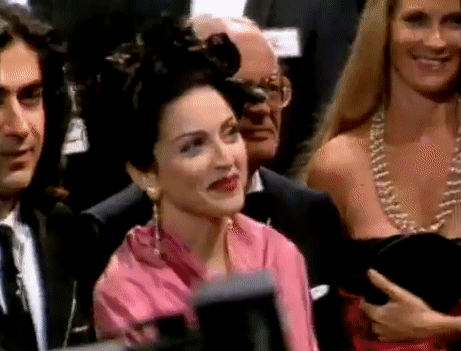
IV: “A FALLING OUT OF SORTS”
In April, Madonna began her Blond Ambition World Tour in Japan, where she started filming what later became Truth or Dare. But Fincher, who’d been set to make the film, didn’t fly to Japan. He was replaced last-minute by Alek Keshishan, another music video director who also worked for Propaganda. In Hirschberg’s Vanity Fair cover story, she writes that when Madonna and Fincher’s “personal relationship cooled, so did their professional alliance.” Keshishan has described whatever happened as something closer to a falling out; he’d gotten the call from Madonna four days before he was wanted in Japan. Said falling out could theoretically have been about anything, but it’s probably relevant that Fincher married model-turned-photographer Donya Fiorentino in 1990. (Yes, the same Donya Fiorentino who’s since married and divorced Gary Oldman, star of Mank. The whole thing’s too complicated to get into here.)
If Fincher had directed the film that became Alek Keshishian’s Truth or Dare, he still would’ve become the David Fincher we know today. But his start in theatrical features would’ve looked very different. Truth or Dare premiered at Cannes in 1991 and subsequently became the highest grossing documentary of all time—so, compared to how everything went down with Alien 3, there’s that. Of course, Fincher would’ve made an entirely different film. By the summer, when Dick Tracy was released, Madonna had gone public with Beatty, who plays a big role in the final cut of Truth or Dare. That, in all likelihood, may not have happened had Fincher gone to Japan. (Madonna and Beatty went their separate ways by the end of 1990, at which point she started transitioning into her next chapter.) Truth or Dare was also distributed by Miramax, so Keshishian has anecdotes like, “The first cut I showed [Madonna] was like three-and-a-half hours long. I clawed it back, but Harvey Weinstein still said I needed to take another 15 minutes out.” Take a second to imagine David Fincher in this same situation; it gets ugly fast.
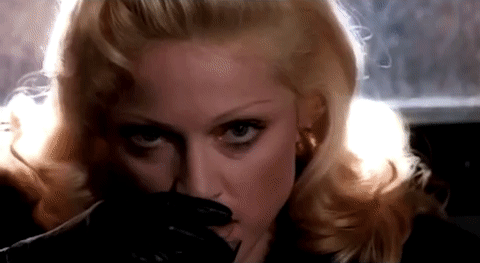
V: “CAN’T BRING MYSELF TO LET YOU GO”
Perhaps unexpectedly, Madonna and Fincher’s professional alliance would heat up again in early 1993. A few months into her Erotica era, which was already proving to be more controversial than the Like a Prayer one, both Ellen von Unwerth and Tim Burton rejected offers to direct Madonna’s “Bad Girl” video. So, she reached out to Fincher, filming it in January. In “Bad Girl,” Madonna plays an executive with self-destructive habits—chain-smoking, sleeping with people who don’t care about her, etc. The video was largely inspired by two films: Looking for Mr. Goodbar (1977), which is why her character is ultimately strangled by one of her one-night stands, and Wings of Desire (1987), which is why Christopher Walken plays a guardian angel watching over her through all of this. (Here’s footage of Madonna and Fincher on the set of “Bad Girl,” which also came my way via Ma.)
There’s no hard evidence that the collaboration was anything other than professional; Fincher was, after all, Madonna’s third choice for the video. He was also still married to Fiorentino, who gave birth to their daughter the next year. However, the two did go on to divorce in 1995, and an article published by Italy’s la Repubblica early that year quotes Fiorentino as calling Madonna “a diabolical character.” While the article should be taken with a grain of salt—it incorrectly reports Fincher’s marriage as having lasted less than a year, and refers to a piece in The Sun that I haven’t been able to find—it claims that Madonna and Fiorentino had some sort of face-to-face altercation in Los Angeles where Madonna was actually slapped. Fiorentino reportedly hated the fact that Madonna “bombarded [Fincher] with phone calls day and night,” and believed that Madonna had played a role in the dissolution of their marriage. It also claims that Fincher was the only man Madonna had loved since Penn. (A previous version of this essay mentioned the allegations in question but couldn’t actually locate them, so thank you to Carlo for linking the la Repubblica report in the comments.)
The “Bad Girl” video was released in February, the same week that Madonna was on French TV describing her and Fincher’s “silent language.” But while she says in the same interview that the two of them “probably will do a movie someday,” the video remains their most recent collaboration.
Nearly three decades have passed since then. Madonna has married and divorced director Guy Ritchie. Fincher has been married to producer Ceán Chaffin for almost 25 years. The former collaborators occasionally mention each other by name in interviews, but only ever in the context of the work itself. (It may please any conspiracy theorists to know, however, that multiple people from Madonna’s personal and/or professional life have starred in Fincher’s projects, including both her ex-husband and the woman he rebounded from her with.) In 2008, Madonna “declared theatrically” that she “discovered” Fincher. In 2014, he called her “crafty” and “street-smart.” It’s undeniable that their relationship—creative and otherwise—changed the course of both of their careers. As Syed wrote, “The years they worked together were the years they grew up.” (In the diary that Madonna kept on the set of Evita [1996], which was later published in Vanity Fair, she appears to have written this in the entry dated February 22, 1996: “Last night I dreamed that I was pursuing a director I was once in love with and he invited me into his home to tell me that he couldn’t be with me. I sat at his kitchen table on the verge of tears. Then he said to me, ‘You once described a man’s body as powerful. What is your definition of power now?’ and I replied, ‘Power is being told you are not loved and not being destroyed by it.’” A more recent tidbit brought to my attention by Yul in the comments: at a Q&A event for Gone Girl [2014], Fincher was asked to sign a Madonna calendar and reportedly responded, “Oh no.”)
There seem to be only two photos of Madonna and Fincher on the internet, and I’ve come to realize that this might be on purpose. The first is the one I used in the header, where Fincher has his back turned to the camera as he directs Madonna in “Bad Girl.” The second is this one below, shared last month on Instagram by makeup artist Joanne Gair. “I found my 1989 Cloutier work diary which I religiously kept up to date while working,” she explained in a post a couple days later. The photo doesn’t do either of them justice, looks-wise. But I like it precisely for its awkwardness, and also because it feels like a document that Gair wasn’t supposed to dust off. ●
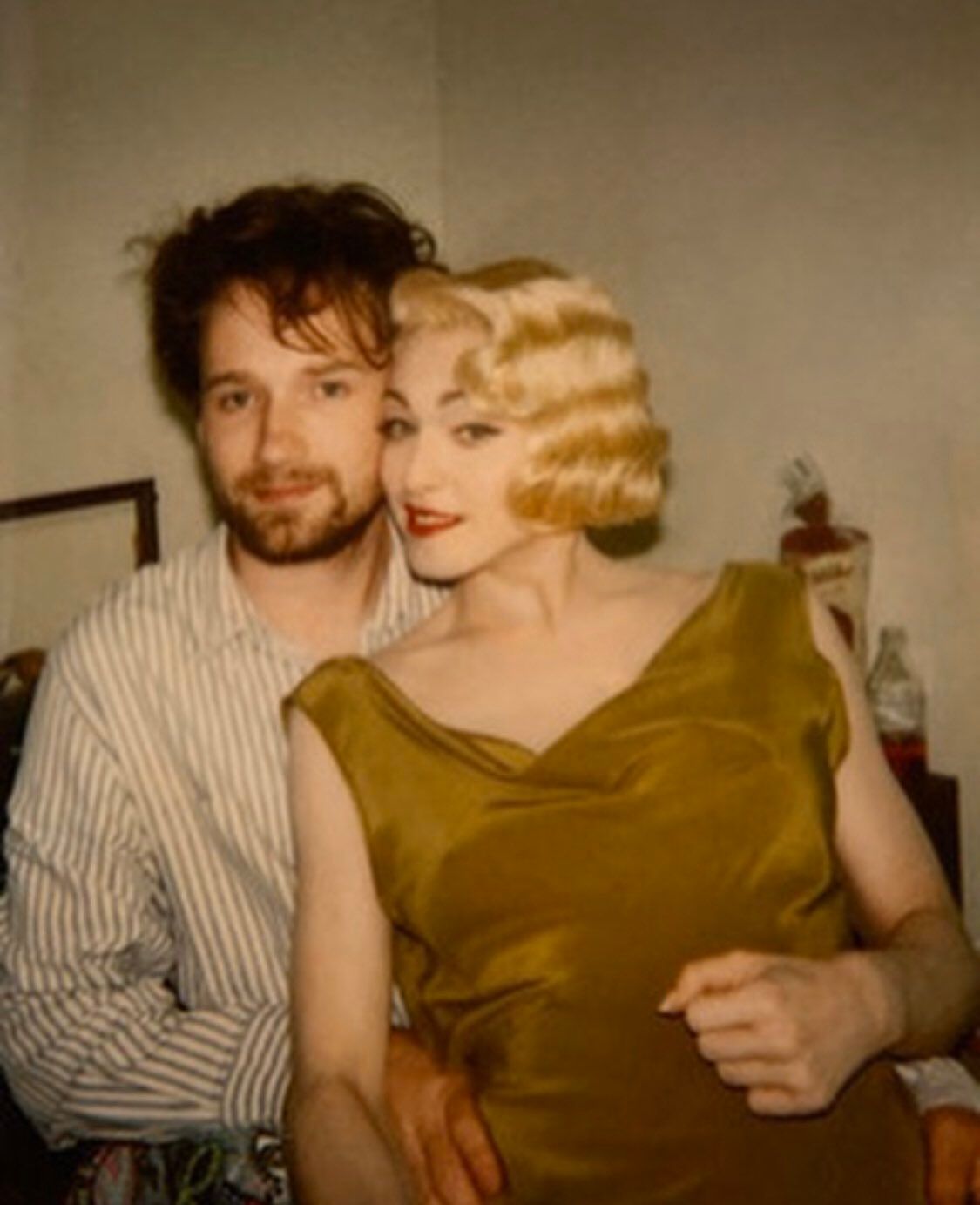
Mononym Mythology is a newsletter about mostly pop divas and their (visual) antics. It’s totally free, but if you got something out of this instalment, consider buying me a coffee. The best way to support my work otherwise is by sharing it. You can subscribe here, and you can also find me on Twitter and Instagram.

